Governors Island pavilions will be recycled to create shade for people and homes for oysters
These two pavilions that have been constructed on New York's Governors Island aim to be more than just eye-catching temporary structures – at the end of the summer they will be recycled to make chandeliers, sun canopies and oyster beds (+ slideshow).
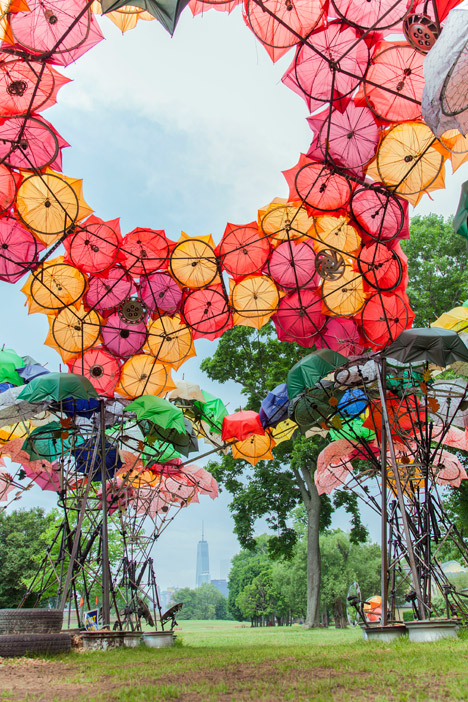
The pavilions, both made from reusable materials, have been built on the island in New York harbour's after the jury for an annual design competition was unable to choose a single winner.

"In the five years we've been doing the City of Dreams Competition, we've never had this happen before," said David Koren, executive producer of Figment, a non-profit organisation that co-organises the City of Dreams competition with the American Institute of Architects New York Chapter's Emerging Architects Committee.
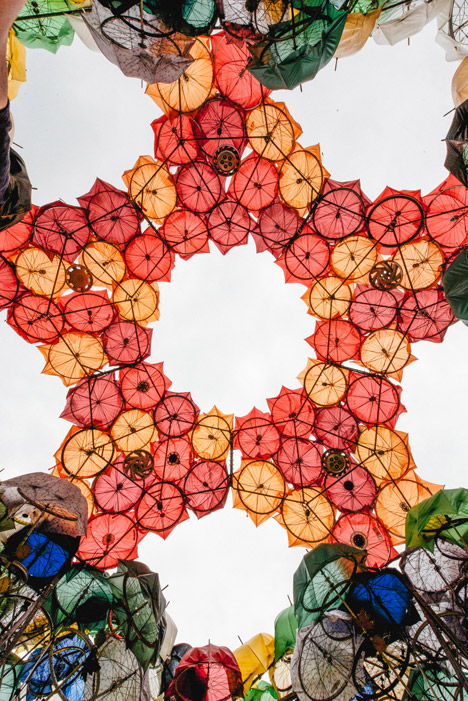
Last year's winner was a cloud-shaped structure made from 53,780 plastic bottles. This year, the jury deadlocked and ultimately selected two winners: The Billion Oyster Pavilion by BanG Studio and the Organic Growth Pavilion by Izaskun Chinchilla Architects.
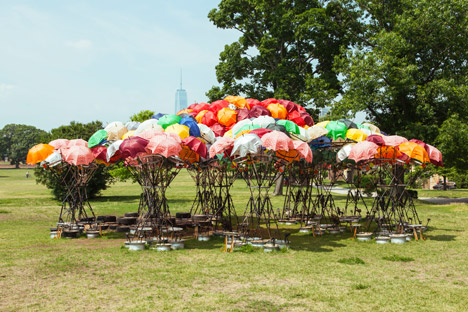
"The jury saw that the Billion Oyster Pavilion and Organic Growth were both incredibly interesting designs that interpret the competition brief in completely different ways," said Koren.
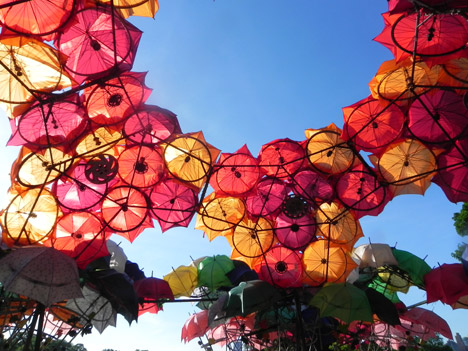
"Perhaps we can create some really exciting dialogue around temporary architecture and sustainability," he said.
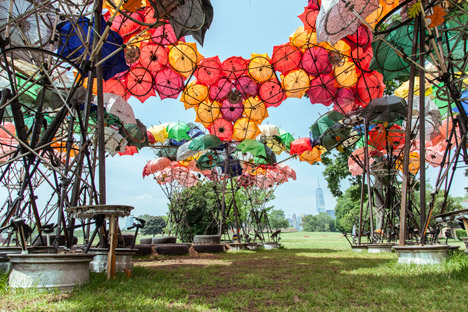
Figment and AIA New York ran a successful Kickstarter campaign to fund the construction of the pavilions.

Both projects address pressing environmental challenges facing the New York region and beyond. The Billion Oyster Pavilion uses materials including nylon rope, steel rebar, clamps, and custom cast-concrete blocks, which can later be used to create oyster beds off the island.
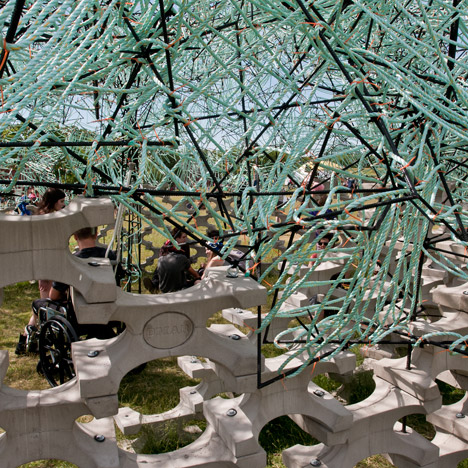
A high school on the island with a special aquatic and maritime curriculum has been working on an ongoing effort to restore oyster beds in New York Harbor, which would have a dramatic impact on water quality due to oysters' ability to filter water.
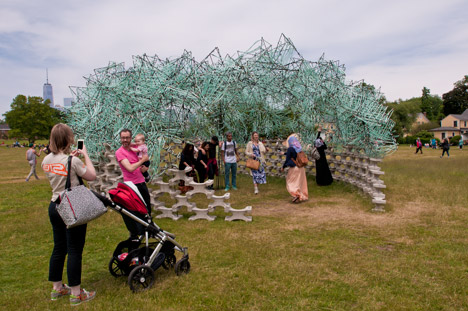
The Organic Growth Pavilion uses discarded materials – broken umbrellas, bicycle wheels, and old stools – to create a series of plant-like clusters that together form a 95-square-metre large canopy.
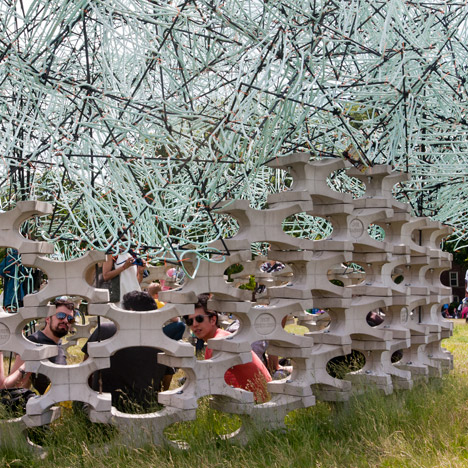
After the end of the summer the canopy will be broken up and distributed to sites across the city for use as smaller shade structures or used inside as decorative chandeliers. The architects hope the pavilion will challenge visitors to rethink the notion of waste, and reconsider garbage as a resource.
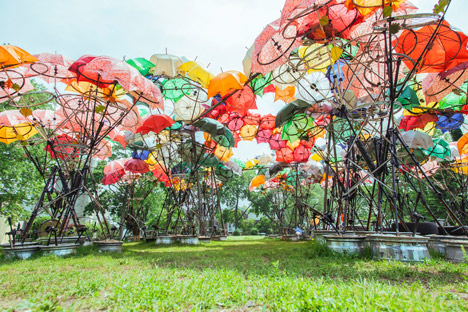
A decommissioned military base dotted with buildings dating from the early 19th century to the present, the 127-acre (70 hectare) Governors Island has been transformed into a public park and civic pleasure ground. A large chunk of the land was sold to the people of New York and the remainder was turned into a national monument in 2003.
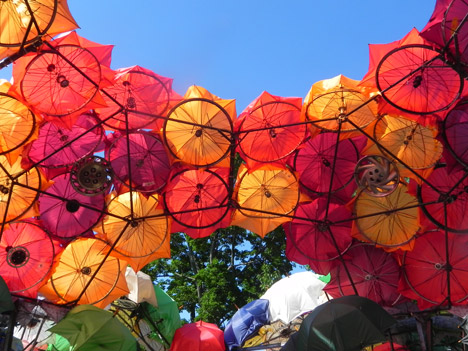
Accessible seasonally by ferries from Manhattan and Brooklyn, the island plays host to concerts, art exhibitions, and special sporting events including an annual polo match and has become one of the city's premier picnic grounds.

The two pavilions will be in situ for the summer season, which concludes on 27 September.